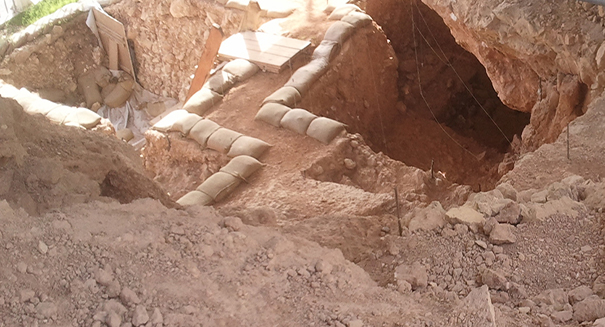
Human social structure evolved earlier than previously thought
Israeli scientists have discovered the oldest known instance of repeated, continuous fire-building in one spot – around 300,000 years old, to be a little more precise. The Qesem Cave, an archaeological site near present-day Rosh Ha’ayin, has big implications regarding when humans first began to develop advanced social structures.
Though it’s known that humans developed fire around one million years ago, anyone who’s done any minimalist camping knows that there’s a big difference between building impromptu fires and having a reliable, dedicated home base. When exactly that practice began has been a hotly contended issue, but the Qesem Cave provides evidence that humans were building hearths as gathering places earlier than previously thought, effectively settling the debate.
“These findings help us to fix an important turning point in the development of human culture – that in which humans first began to regularly use fire both for cooking meat and as a focal point – a sort of campfire – for social gatherings,” says researcher Dr. Ruth Shahack-Gross. “They also tell us something about the impressive levels of social and cognitive development of humans living some 300,000 years ago.”
Excavators found flint tools of various designs in and around the hearth site. Those inside were clearly designed for cutting flesh, while others outside the Cave appeared to have entirely different uses. Large deposits of burnt bones suggest that the fires were used to cook meat. More surprisingly, the Cave was organized into different sections based on “household” activities – eating, sleeping, socializing, etc. – not unlike human houses today. The findings give credence to the theory that the social order was already somewhat robust at that time.
To confirm the find, Shahack-Gross and her colleagues were able to identify bits of bone and soil that had been heated to very high temperatures mixed in with a large ash deposit using infrared spectroscopy. This was conclusive proof that the area had been the site of a large hearth. By examining very thin slices of hardened ash under a microscope, she was able to distinguish a great many micro-strata – evidence for a hearth that was used repeatedly over time.
As to who lived in the cave, that’s still anyone’s guess. Scientists also found teeth of about the same age of the hearth, making them the oldest-known evidence of human remains in southwest Asia. The problem, though, is that the the teeth are decidedly human, researchers can’t conclusively identified them as belonging to a particular species of human. They could belong to Homo sapiens (modern humans), Neanderthals or an altogether different human species. Researcher Avi Gopher, coauthor of the study, believes more modern humans are the best bet.
“The best match for these teeth are those from the Skhul and Qafzeh caves in northern Israel, which date later [to between 80,000 and 120,000 years ago] and which are generally thought to be modern humans of sorts,” he said in an interview with Nature.
A more detailed explanation of the findings is published in the Journal of Archaeological Science.
Leave a Reply